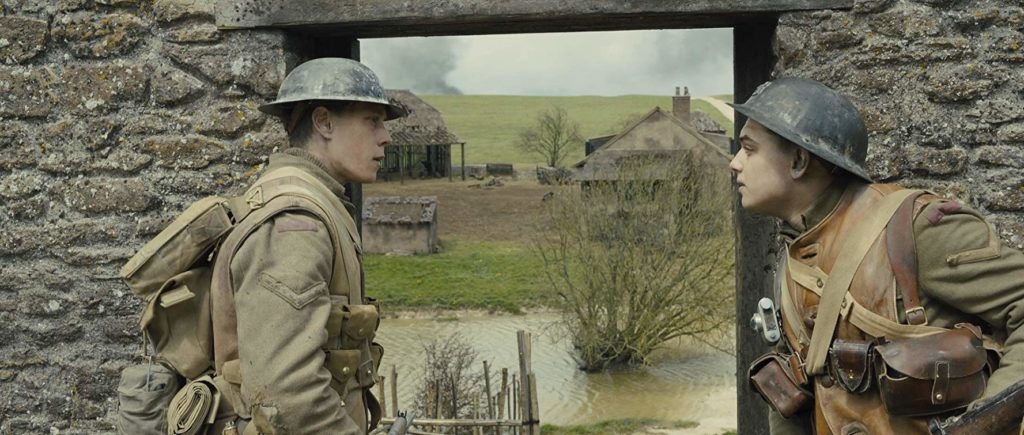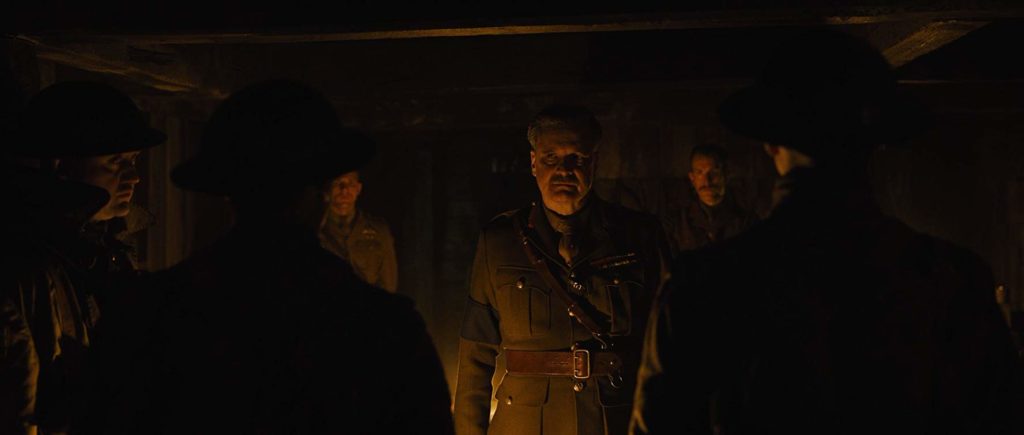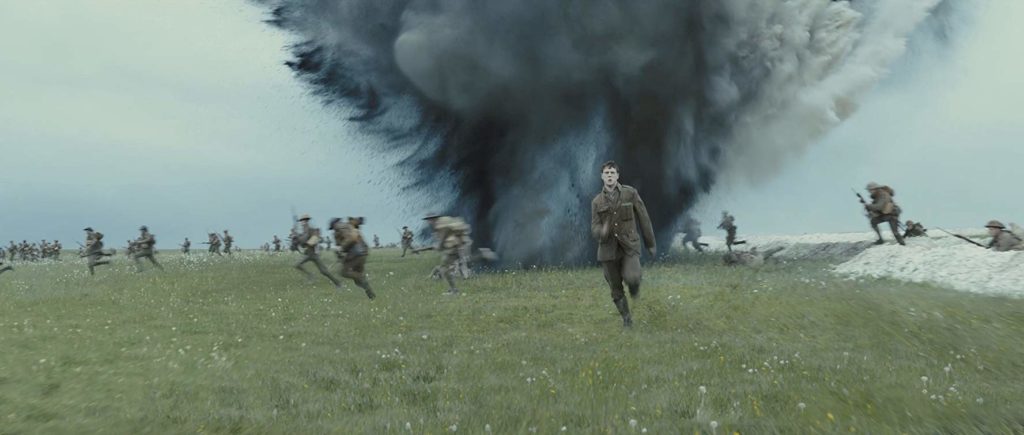
While it certainly doesn’t want for competition, the title of Dumbest Controversy of 2019 might just go to Scorsesegate. For those blessedly unaware of this particular teapot-tempest, the flashpoint came in October, when Martin Scorsese offhandedly mentioned in an interview that he didn’t care for Marvel superhero movies, and that he considered them more akin to theme park rides than “cinema”– at least in the sense of the films he and his contemporaries made in the 1970s, or the classics that inspired them. Regardless of the fact that people are allowed to have opinions, that Scorsese falls comically outside the MCU’s key demographic, and that it’s virtually impossible to disagree with the meat of his argument (and I say this as an unironic and on-the-record fan of Marvel’s output), the director’s comments sparked literal months of hot takes from the Twittersphere, gnashing of fanboy teeth, and groan-worthy interview questions posed to everyone from Francis Ford Coppola to Ken Loach. (For my part, I believe Marvel’s brand of superheroics belongs in any conversation about popcorn-spectacle all-timers, but nowhere near the likes of Bergman and Fellini. If we’re splitting hairs, I’d say they’re more akin to pop concerts than theme park rides, but that’s an article for another day.)
I was put in mind of this debate while watching 1917, which will go down in the books as a 2019 film even though it was not released in most major cities until 2020. 1917 will likely check more viewers’ “cinema” boxes than, say, Ant Man; it’s a prestigious war epic from an Oscar-winning filmmaker, featuring some of the most bravura work from one of the greatest cinematographers of all time. Yet, in a very real way, it’s the very definition of a “theme park” film. By the time the end credits rolled, I all but reached to unbuckle my seatbelt.
The setup is pretty standard war movie fare: two young British WWI soldiers (George MacKay and Dean-Charles Chapman) are given are given an urgent message that needs to be delivered to avert an ambush and certain massacre. With no time to lose, the two set out on foot across the No Man’s Land with nothing but their orders and the bare essentials. To add a bit of a personal touch, the receiving platoon is home to the brother of one of the soldiers. The hook, as it were, lies not in the story, but in the presentation: the entire two-hour running time is presented as a single, uninterrupted take, essentially casting the audience (or at least Roger Deakins’ camera) as a third soldier on the mission. There isn’t a moment to spare, and director Sam Mendes makes sure you won’t miss a moment of it.

Before I go on, I should probably add a disclaimer: war movies have never been my bag, and war itself is not among my areas of expertise. Having been raised pacifist and largely apolitical, tales of military derring-do have simply never interested me, so forgive me if my grasp of relevant jargon and history is shaky. I make exceptions, however, for films which bring something unusual to the table: the horrific surrealism of Apocalypse Now, the wry revisionism of Inglourious Basterds, the utterly indescribable insanity of Fantasy Mission Force. (I feel similarly about westerns, but my qualifier in that case is “Is Klaus Kinski in it?”)
1917 ticks this box with its “single-shot” gimmick. The idea of framing a feature film as one continuous shot, of course, is nothing new. As with so many innovations in suspense filmmaking, its roots can be traced to Alfred Hitchcock, who used the technique for his Leopold-and-Loeb chamber drama Rope (albeit with a few very obvious cheats). There have been a few similar experiments over the years (the breathtaking Russian Ark perhaps being the most famous example), but recent efforts have seen the trick very nearly becoming a genre unto itself. Birdman, of course, rode the gimmick to a Best Picture win, and this year alone saw two very different (but both excellent) films– One Cut of the Dead and Long Day’s Journey Into Night— devote fully half their running time to a single, serpentine shot, both of which, according to press, are genuine. Like Rope, 1917 fudges the edges– it would probably be a workplace hazard to have that many explosions lined up for a single day’s shoot– but advances in technology have rendered it all but seamless.
As an experiment in tension, Hitchcock would likely approve. The choreography of Deakins’ steadicam is as dextrous and precise as that of Gene Kelly and Fred Astaire, with each placement and movement clearly planned for maximum impact (in this respect, it somewhat resembles the showier entries in the found-footage horror cycle, such as Cloverfield and Ti West’s The Sacrament). Once the boys venture out of the trenches and into the No Man’s Land (envisioned as a Boschian landscape of barbed wire, blackened trees, body parts, and dead horses) the pace never lets up. As much as any film ever made, 1917 is a well-oiled machine, painstakingly constructed to hit you right in the adrenal glands.

Yet that brings us back to Scorsese’s controversial metaphor. More than just about any movie in recent memory (Marvel or otherwise), 1917 well and truly feels like it could be a theme park ride– specifically, the Star Tours/Captain EO model, in which the ticketholder is strapped into a seat, placed on a rail, and shepherded through a pre-filmed narrative under the illusion of movement and/or agency. 1917 never gets quite so cheeky as to place the audience in the POV of an unseen character, but the intention is clearly to make one feel as if they themselves are trudging across the Western Front. This effect is particularly enhanced when viewing the film in a state-of-the-art multiplex, where the towers of Dolby Surround speakers make each blast of gunfire (and Thomas Newman’s thunderous score) shake your seat and resonate through your ribcage. 3D may be fading (at least until Hollywood faces its next existential threat), but what 1917 offers is functionally nearly the same thing: it uses the moviegoing experience, as much as the movie itself, to make an impression.
I don’t mean to be too harsh, as seeing 1917 in the theater truly is something to be experienced (and savored, particularly as Hollywood at large moves into its yearly post-Oscar dumping ground). But I can’t say how long it will stick in your mind compared to any of the idiosyncratic war films listed above– or Dunkirk, Christopher Nolan’s structurally adventurous World War II film with which 1917 shares a significant amount of DNA. It’s a piece of filmmaking bravado, but it will be a shame if it continues to suck up award season oxygen that could go to, say, Little Women or The Farewell (though Deakins is a shoo-in, and one could argue that this is nothing if not a feat of direction). Exhaustingly, the what-is-cinema discourse will likely rage long into the twenties and beyond, and films like 1917 will only serve to muddy the waters. In this particular case, I vote theme park– but who doesn’t love Space Mountain?
1917
2019
dir. Sam Mendes
119 min.
Opens Friday, 1/10 @ Coolidge Corner Theatre, Kendall Square Cinema, Capitol Theatre, and elsewhere

